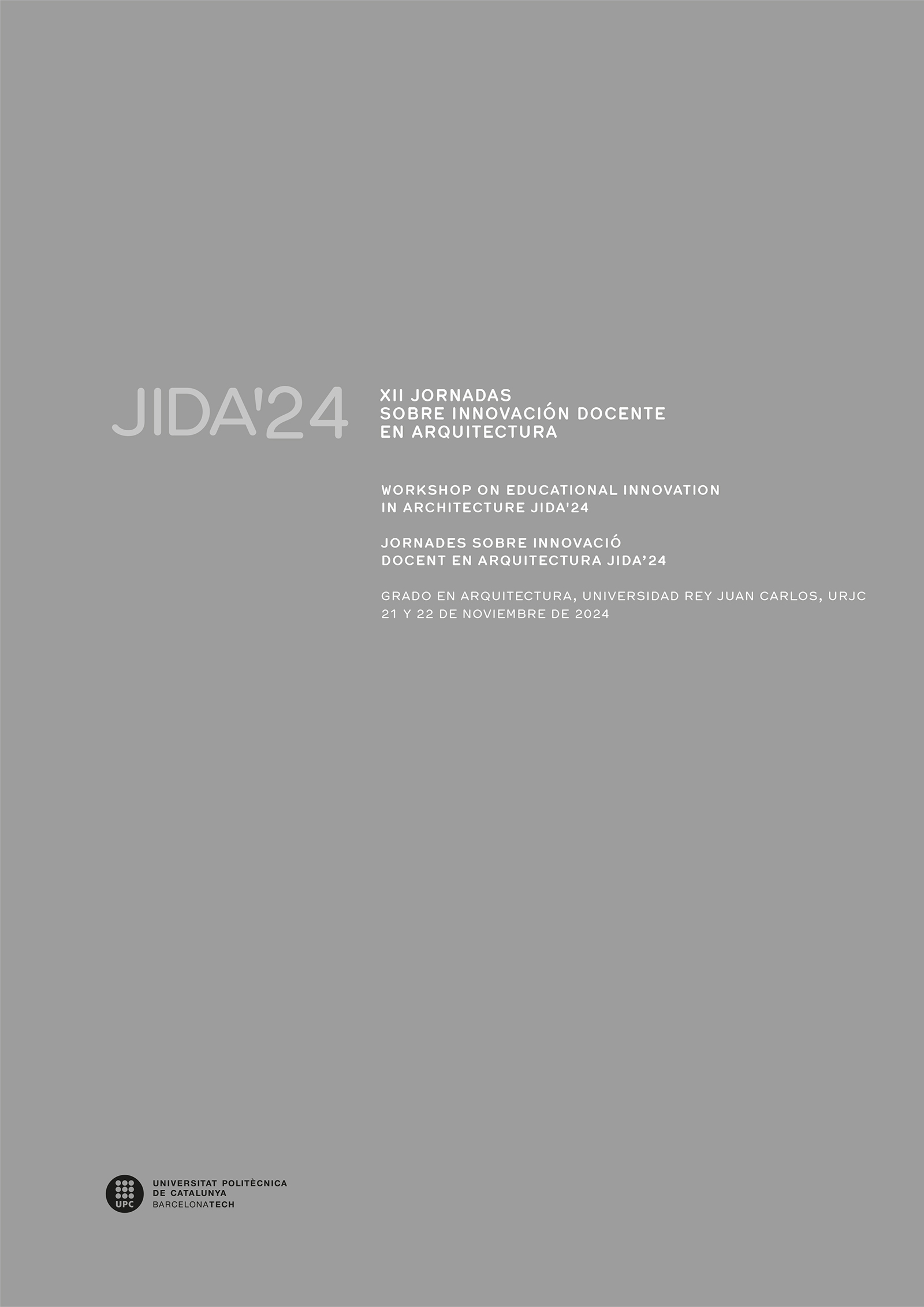Draw fast, draw slow: the dichotomy in learning architectural representation
DOI:
https://doi.org/10.5821/jida.2024.13255Keywords:
hand drawing, digital drawing, learning,reflection, KahnemannAbstract
In contemporary architectural education, graphic representation plays a key role in student education. To translate abstract ideas into coherent visual images is a fundamental skill in architecture. While hand-drawing has been essential for developing this ability, digital tools have challenged traditional methods, changing both the tools and ways of thinking in architecture. Instead of viewing manual and digital techniques as opposites, this paper defends that they should be understood as complementary. Hybridizing these methods, rather than their strict separation, fosters a balanced approach where slow, reflective processes coexist with faster and automatic ones. By integrating both approaches, students develop a deeper spatial understanding and technical competencces. The teaching experience presented here highlights the importance of adapting to the cultural context, marked by immediacy and digital overstimulation, and emphasizes that learning to be an architect means learning to draw, whether by hand or digitally.
References
Cross, Nigel. 2006. Designerly Ways of Knowing. Springer.
Gardner, Howard. 1983. Frames of Mind: The Theory of the Multiple Intelligences. New York: Basic Books.
Gispert Hernández, Jordi de, Sandra Moliner Nuño, Alberto Sánchez Riera, Isabel Crespo Cabillo, y Carles Pàmies Sauret. 2024. «A Historical and Geometrical Analysis of the Sansalvador Villa by SfM-MVS Photogrammetry». Digital Applications in Archaeology and Cultural Heritage 34: e00365. https://doi.org/10.1016/j.daach.2024.e00365
Kahneman, Daniel. 2011. Thinking, Fast and Slow. Penguin. ISBN 978-0141033570.
Krämer, Walter. 2014. «Kahneman, D». Statistical Papers 55 (3): 915-915. Springer Berlin Heidelberg. https://doi.org/10.1007/s00362-013-0533-y
Levy, David M. 2016. Mindful Tech: How to Bring Balance to Our Digital Lives. Yale University Press.
Martínez Mindeguía, Francisco, Isabel Crespo Cabillo, y Josep Font Comas. 2004. Les raons del Dibuix Tècnic 1. Els dibuixos de Josep LLinàs. Sant Cugat del Vallès: Edicions ETSAV-UPC.
Martínez Mindeguía, Francisco, Isabel Crespo Cabillo, y Josep Font Comas. 2006. «RDT: Una Mirada Crítica Sobre el Dibujo Profesional». Segundas Jornadas Sobre Investigación en Arquitectura y Urbanismo. Sant Cugat del Valles, Barcelona.
Murani, Bruno. 1974. Diseño y Comunicación Visual: Contribución a una Metodología Didáctica. Colección Comunicación Visual. Barcelona: Editorial Gustavo Gili.
Oxman, Neri. 2007. «Digital Craft: Fabrication-Based Design in the Age of Digital Production». Architectural Design 77 (4): 82-85.
Pallasmaa, Juhani. 2014. La Mano que Piensa: Sabiduría Existencial y Corporal en la Arquitectura. Editorial Gustavo Gili.
Sánchez Riera, Alberto, Carles Pàmies Sauret, y Inés Navarro Delgado. 2022. «Nuevas Estrategias para la Visualización y Difusión del Patrimonio Descontextualizado. El Caso de la Sillería de la Catedral de Oviedo». EGA Expresión Gráfica Arquitectónica 27 (44): 40-49. https://doi.org/10.4995/ega.2022.15960
Sennett, Richard. 2008. The Craftsman. Yale University Press.
Schön, Donald A. 1983. The Reflective Practitioner: How Professionals Think in Action. New York: Basic Books. (Reprinted in 1995).
Siza, Álvaro. 2009. Textos. Porto: Zivilisaçao.
Tejedor Fernández, Luis. 2022. «Mirar, Pensar, Proyectar. Alejandro de la Sota Dibujando». EGA Expresión Gráfica Arquitectónica 27 (45): 116-127. https://doi.org/10.4995/ega.2022.16961






















